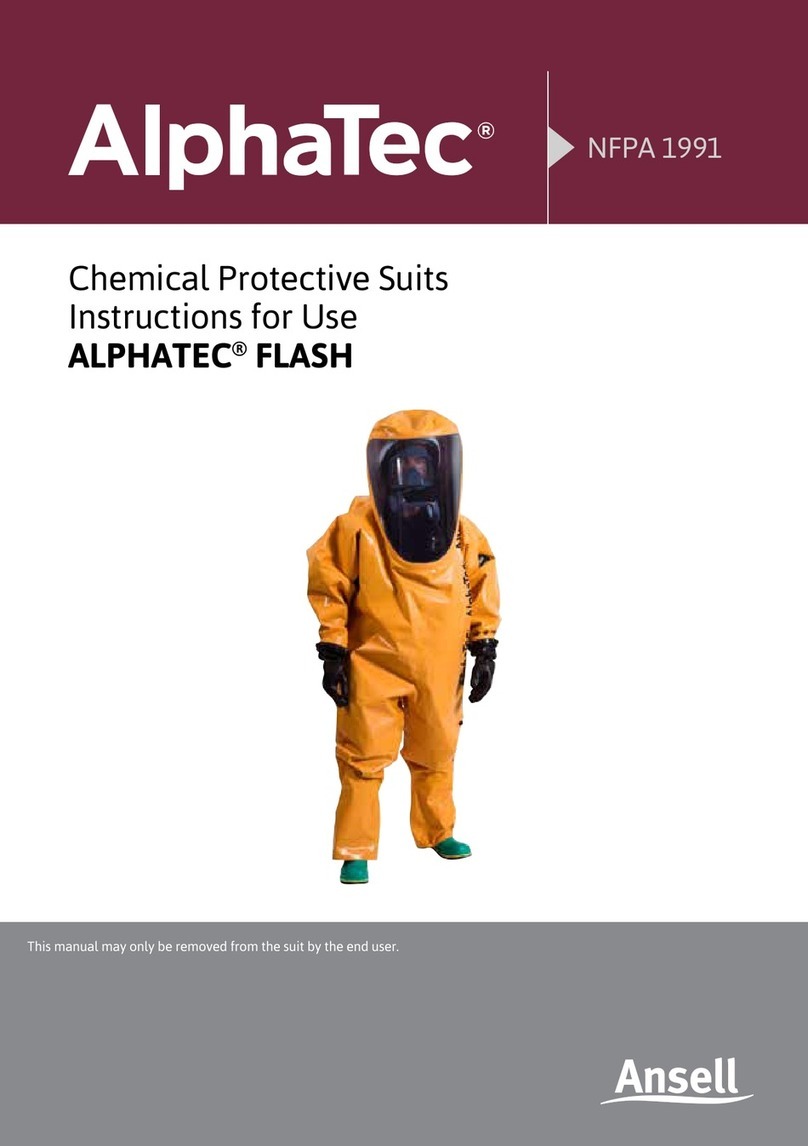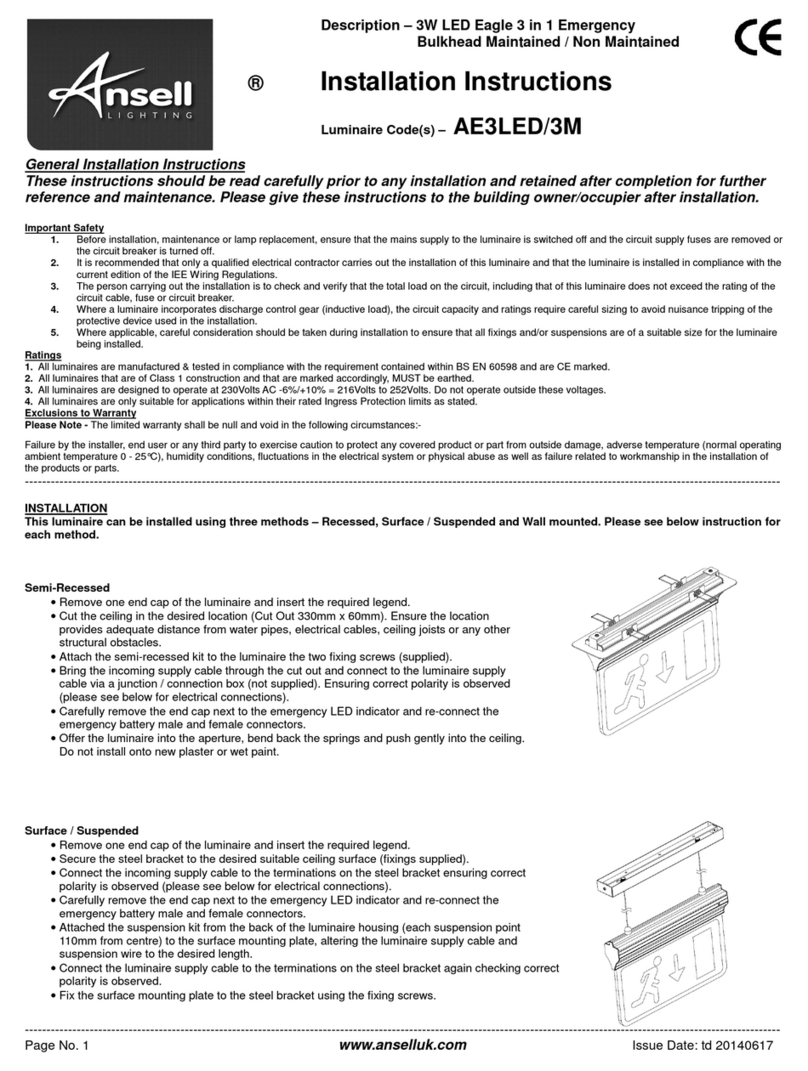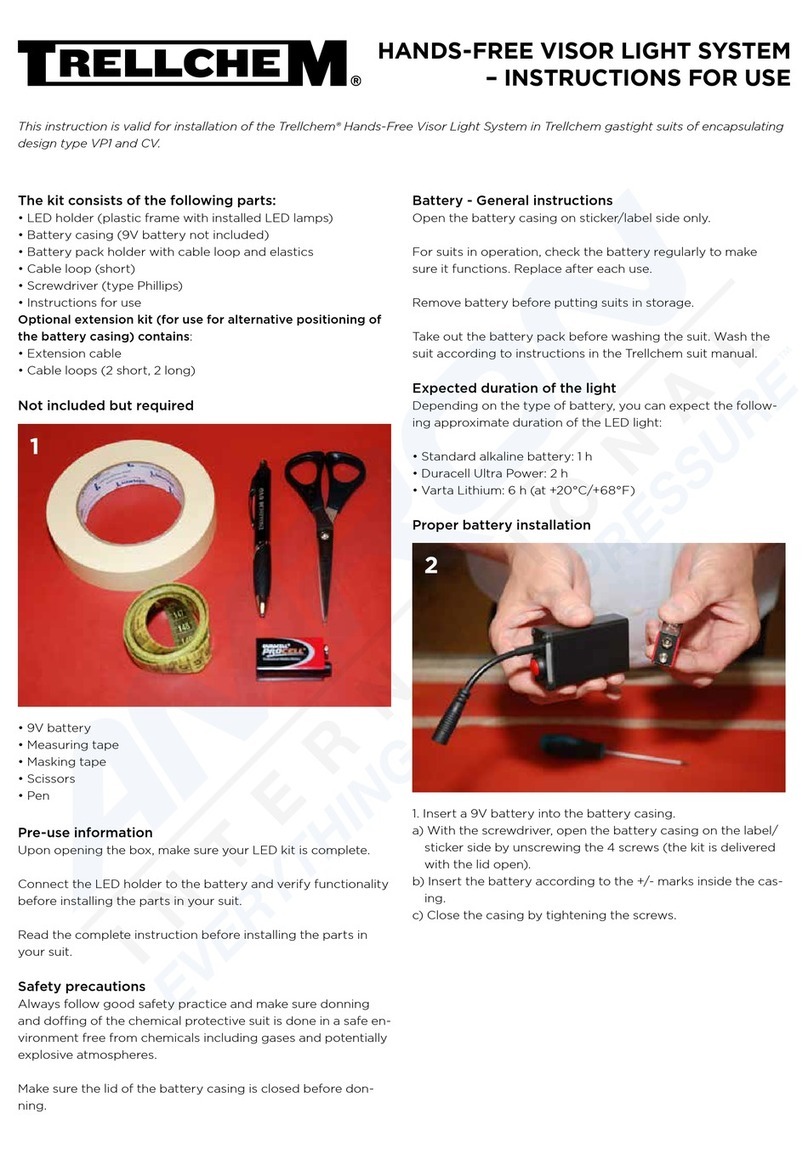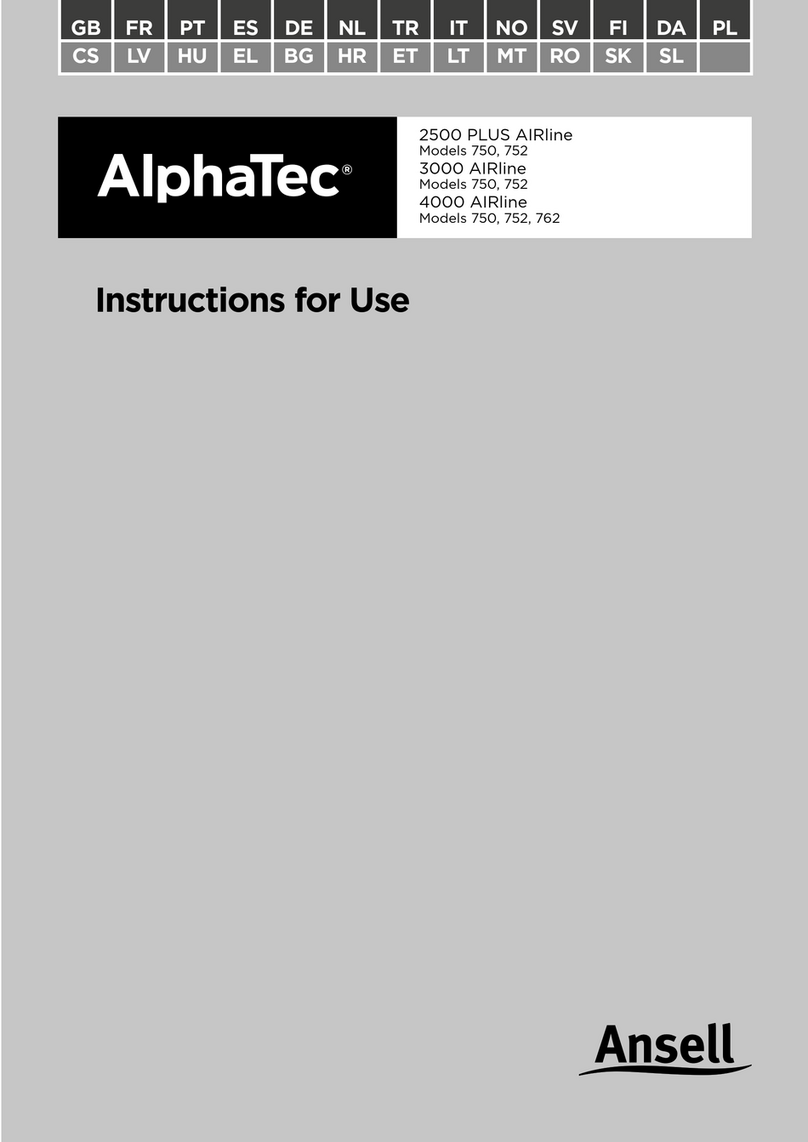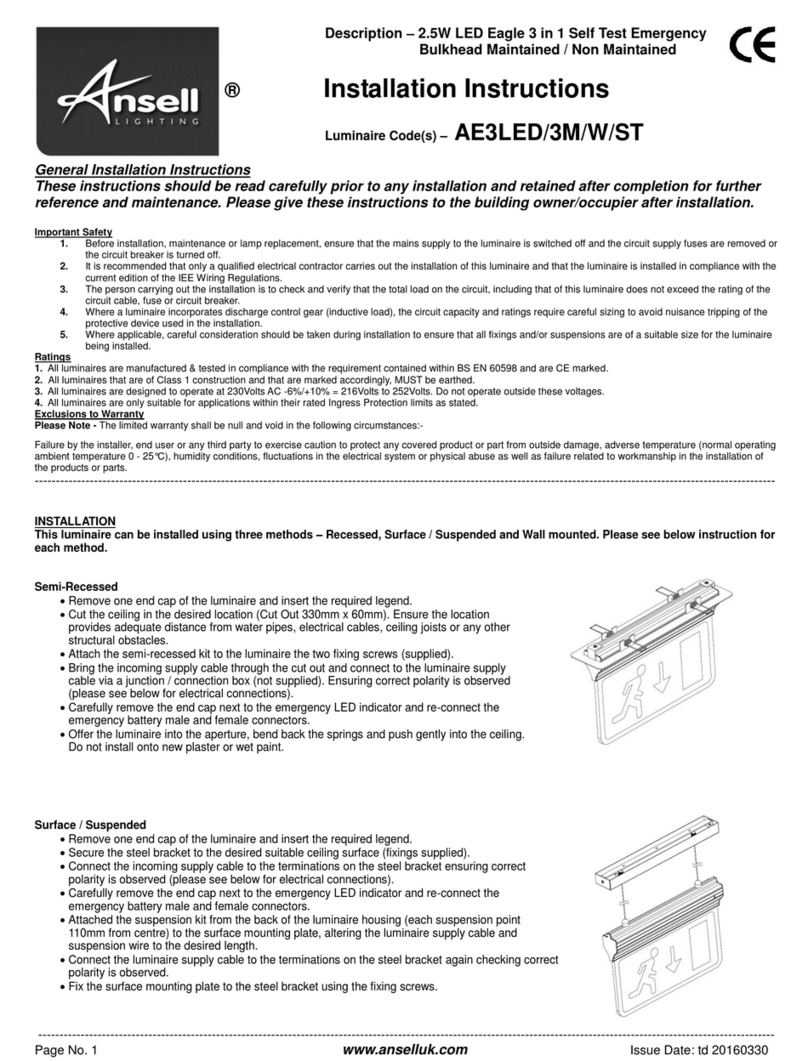
CONTENTS
14. Maintenance of your dry suit ........................................................39
14.1 Cleaning..................................................................................................................39
14.2 Zipper care ...........................................................................................................40
14.3 Folding and storing your dry suit ............................................................41
15. Repairing a dry suit .............................................................................42
15.1 General rules for repairs..............................................................................42
15.1.1 Adhesives ......................................................................................................................... 42
15.1.2 Patching ............................................................................................................................ 43
15.1.3 Gluing preparations................................................................................................... 43
15.1.4 How to mix the VIKING™2-component glue.............................................. 43
15.1.5 Gluing ................................................................................................................................. 43
15.1.6 Neutralising .................................................................................................................... 43
15.1.6 Curing ................................................................................................................................. 44
15.1.7 Tools for repairs........................................................................................................... 44
15.2 Pressure test.........................................................................................................45
15.3 Patching - procedure......................................................................................46
15.4 Exchange of latex cuffs.................................................................................47
15.5 Service .....................................................................................................................48
16. Disposal......................................................................................................49
17. Technical information.......................................................................50
17.1 Suit material and seams...............................................................................50
17.2 Sizes ..........................................................................................................................50
17.3 Components.........................................................................................................51
17.4 Dry suit components explained...............................................................55
17.5. Optional accessories .....................................................................................56
17.5.1 VIKING™Quick Neck System ................................................................................ 56
17.5.2 Hoods.................................................................................................................................. 56
17.5.3 Gloves and glove systems...................................................................................... 56
17.5.4 Relief zip........................................................................................................................... 56
17.5.5 Pockets .............................................................................................................................. 56
18. Contaminated Water Diving (CWD)..........................................57
18.1 Foreword................................................................................................................57
18.2 Suggested diving systems............................................................................57
18.3 Gloves ......................................................................................................................59
18.4 EN 14225-2:2017 optional hazmat “HZ” and micro-organism
“BIO” protection approval......................................................................................59
18.5 Permeation test results.................................................................................61
18.6 Decontamination - Recommendations and considerations..63
18.6.1 Chemical decontamination.................................................................................. 63
18.6.2 Biological decontamination................................................................................. 63
18.7 Inspection..............................................................................................................63
19. VIKING™ dry suit limited warranty..............................................66
Appendix: Customer information to be
provided at the point of sale.................................................................68






